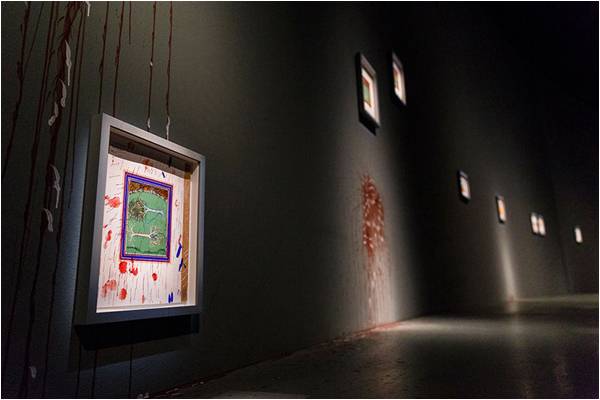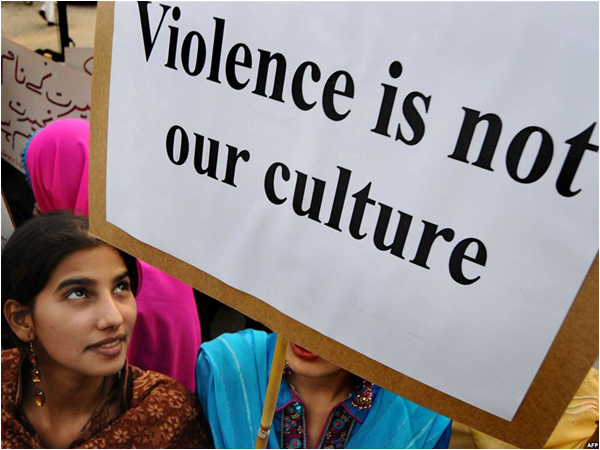
Every March, right after fashion week but slightly before tax season, we get Art Fair time, marking a golden period for those with money to make choice investments that are also tax breaks. I’ve written to you about Art Dubai in the past, and for a while that’s the only fair I attended, largely because I wasn’t invited anywhere else. But this year I’m giddy with excitement because I find myself with an invite to the opening of not one but two art fairs. This marks a significant improvement on my time last March which was spent hallucinating in a warm room next to a plastic bucket because, well, jaundice isn’t a good bedfellow.
Art Fairs are the seedier, non-botoxed face of the art world and the one place where the fact that things are being bought and sold marketplace-style is made conspicuous. Gone is the veneer of high-end conceptualism, and useless is the obscure jargon that turns a tea cup into a commentary on neo-colonialism. This is the face of what drives the contemporary art market: money. Still, I think the fairs are instructive and fun, if only because they sometimes have free food. I went to the opening cocktails for a small fair here called Pulse Art. It sounds like a farmers’ market, I know, and on reflection if you replaced the sculptures with fruit you wouldn’t be far off the mark. It was quite cool when it first started in the early 2000s and it still attracts a diverse crowd of attendees, though like all of us it has begun to droop with age. It’s the younger, more accessible cousin to the Armory show, the main NY art fair that is the center of Art Week, and one so intense that the last time I went I had an anxiety attack. I skipped Armory this year for fear of a relapse.
Paper invites are very passé now, so I was emailed a bar code and told to arrive at 6 pm sharp. Always suspicious that any invitation is basically a ruse to humiliate me at the entrance (“Josie Grosie!”), I arrived twenty minutes early to scout out the scene. To my surprise I was greeted and escorted by a smiling man dressed like Boy George circa 1988: purple eye-shadow, bowler hat, chunky shoes - the works. Inside, the cocktails were already flowing and the crowd was thick and elaborately dressed, so that at first glance the entire thing looked like a dinner scene from The Hunger Games. There was a guy wearing a jumpsuit with printed eyes and sporting a hat from which a sculpture of an eyeball dove off his forehead; there were three women dressed as various incarnations of a pastier, paler Tilda Swinton, walking around in unison and communicating (I imagined) only telepathically; there was a woman dressed entirely in a silver clutching the hand of a man dressed entirely in gold, both with matching painted faces; one woman was dressed like a tiger and another man was a shirtless Jesus, though he may also have just been a hipster.

I wandered around the booths trying to look at what different galleries had brought with them - at good art fairs you see galleries from all over the world - but it was difficult considering the headwear of most present. On a related note, hats are very in this year. The people there were dressed to attract attention, to be art pieces in and of themselves, which was both cute and irritating.
I did spot the work of an up-and-coming Pakistani miniaturist called Hiba Schabaz who was showing with one of the galleries, and that was a nice surprise. A man was standing next to me when I saw her work and he was explaining to his companion the history of miniature art from Pakistan. Always a keen eavesdropper, I slid into their conversation and we began chatting (one of the joys of living in the West is that strangers don’t look at you like you’re a venereal disease whenever you speak to them without solicitation). His name was Gus, he was an architect and he was wearing a shirt colored vomit green. He told me what a big fan he is of Pakistani art. He had just returned from London where he had seen Imran Qureshi’s latest work.
Imran Qureshi, the darling of museums the world over, has just unveiled his first show in a London museum with the installation in and on London’s Barbican Center. Though the Barbican itself is a monstrously ugly building complex, its interior spaces are great for installations. From what Gus told me, Qureshi’s installation, which is a mixture of framed miniatures and paintings directly on the wall, is both darkly moving and beautiful.
The whole thing left me quite pleased about Pakistan’s cultural role in the world these days, what with our recent Oscar wins and all. This is not, I have found, a universal response. I got several emails last week asking me why I was so proud of ventures that portray the ‘bad side of Pakistan’, as if we were basically a nation of social workers. This is a ludicrous objection predicated on a fictional delusion. It is not the task of our creative professionals to whitewash our ‘image’, an argument that is usually a variation of “Shut up, don’t talk about it”. That is in effect lying, which is directly opposite to what these guys are doing. While it is true that Qureshi’s installation is about violence and Obaid-Chinoy’s film was about honour-killing, both of those are realities in modern-day Pakistan. You want to show the softer side of Pakistan? This is it. It’s the well-made short movie and the beautiful art work that try to rationalise the worst of what we face into the best of how we can think about it. We should all be proud of them. Like Gus, but better dressed.
Write to thekantawala@gmail.com
Art Fairs are the seedier, non-botoxed face of the art world and the one place where the fact that things are being bought and sold marketplace-style is made conspicuous. Gone is the veneer of high-end conceptualism, and useless is the obscure jargon that turns a tea cup into a commentary on neo-colonialism. This is the face of what drives the contemporary art market: money. Still, I think the fairs are instructive and fun, if only because they sometimes have free food. I went to the opening cocktails for a small fair here called Pulse Art. It sounds like a farmers’ market, I know, and on reflection if you replaced the sculptures with fruit you wouldn’t be far off the mark. It was quite cool when it first started in the early 2000s and it still attracts a diverse crowd of attendees, though like all of us it has begun to droop with age. It’s the younger, more accessible cousin to the Armory show, the main NY art fair that is the center of Art Week, and one so intense that the last time I went I had an anxiety attack. I skipped Armory this year for fear of a relapse.
I got several emails last week asking me why I was so proud of ventures that portray the 'bad side of Pakistan', as if we were basically a nation of social workers
Paper invites are very passé now, so I was emailed a bar code and told to arrive at 6 pm sharp. Always suspicious that any invitation is basically a ruse to humiliate me at the entrance (“Josie Grosie!”), I arrived twenty minutes early to scout out the scene. To my surprise I was greeted and escorted by a smiling man dressed like Boy George circa 1988: purple eye-shadow, bowler hat, chunky shoes - the works. Inside, the cocktails were already flowing and the crowd was thick and elaborately dressed, so that at first glance the entire thing looked like a dinner scene from The Hunger Games. There was a guy wearing a jumpsuit with printed eyes and sporting a hat from which a sculpture of an eyeball dove off his forehead; there were three women dressed as various incarnations of a pastier, paler Tilda Swinton, walking around in unison and communicating (I imagined) only telepathically; there was a woman dressed entirely in a silver clutching the hand of a man dressed entirely in gold, both with matching painted faces; one woman was dressed like a tiger and another man was a shirtless Jesus, though he may also have just been a hipster.

I wandered around the booths trying to look at what different galleries had brought with them - at good art fairs you see galleries from all over the world - but it was difficult considering the headwear of most present. On a related note, hats are very in this year. The people there were dressed to attract attention, to be art pieces in and of themselves, which was both cute and irritating.
I did spot the work of an up-and-coming Pakistani miniaturist called Hiba Schabaz who was showing with one of the galleries, and that was a nice surprise. A man was standing next to me when I saw her work and he was explaining to his companion the history of miniature art from Pakistan. Always a keen eavesdropper, I slid into their conversation and we began chatting (one of the joys of living in the West is that strangers don’t look at you like you’re a venereal disease whenever you speak to them without solicitation). His name was Gus, he was an architect and he was wearing a shirt colored vomit green. He told me what a big fan he is of Pakistani art. He had just returned from London where he had seen Imran Qureshi’s latest work.
Imran Qureshi, the darling of museums the world over, has just unveiled his first show in a London museum with the installation in and on London’s Barbican Center. Though the Barbican itself is a monstrously ugly building complex, its interior spaces are great for installations. From what Gus told me, Qureshi’s installation, which is a mixture of framed miniatures and paintings directly on the wall, is both darkly moving and beautiful.
The whole thing left me quite pleased about Pakistan’s cultural role in the world these days, what with our recent Oscar wins and all. This is not, I have found, a universal response. I got several emails last week asking me why I was so proud of ventures that portray the ‘bad side of Pakistan’, as if we were basically a nation of social workers. This is a ludicrous objection predicated on a fictional delusion. It is not the task of our creative professionals to whitewash our ‘image’, an argument that is usually a variation of “Shut up, don’t talk about it”. That is in effect lying, which is directly opposite to what these guys are doing. While it is true that Qureshi’s installation is about violence and Obaid-Chinoy’s film was about honour-killing, both of those are realities in modern-day Pakistan. You want to show the softer side of Pakistan? This is it. It’s the well-made short movie and the beautiful art work that try to rationalise the worst of what we face into the best of how we can think about it. We should all be proud of them. Like Gus, but better dressed.
Write to thekantawala@gmail.com

